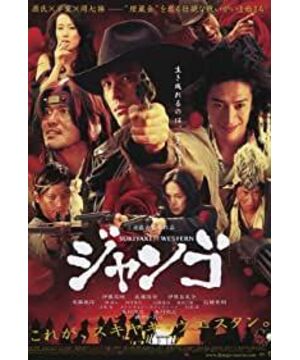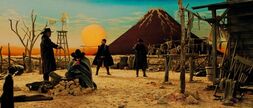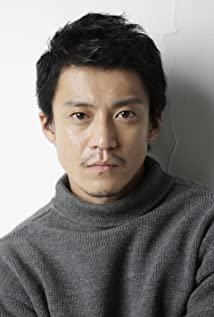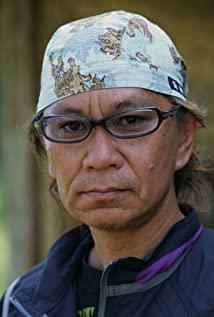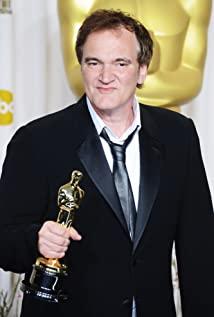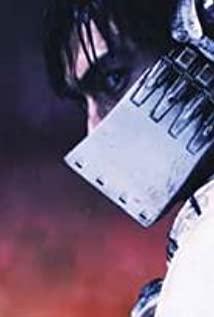I am absolutely defeated by Takashi Miike's courage! Although several of the actors in the play have lived abroad, and Quentin's children are doing their best to perform, I still feel that I really don't understand what they are saying. In addition to my poor English ability, this attempt by Xiao Sanchi's friend is really not good. On the contrary, this Japanese-style English, which is full of Japanese style and can not be understood very well, coupled with exaggerated body movements, is really an unexpected joke.
A completely empty story, it can be established anywhere. The story itself is a mash-up story. The War of the Roses, the Controversy of Pingyuan, American Westerns, Italian Cowboys, Shakespeare, The Lord of the Rings... It's just a basket, everything is put in it. The story of chaotic stew is fortunately complicated, but it is not too chaotic. This is probably because it is called sukiyaki. Although I have never eaten any sukiyaki, it feels similar to our malatang and hot pot.
The ingredients are not particular, and there are no rules for seasoning. As long as they are put together, good cooking can make this pot delicious.
The same is true of interesting movies. They don't play cards according to common sense, with a one-pot story and mixed costumes. Miike Tsongshi seems to be relaxed and makes everyone happy. It's not so much the cliché of the plot as it is the style of the classic westerns that people follow. At the end of the story that kid turned into an Italian cowboy again? No matter how unreasonable it is, it seems that only such a chaotic ending fits this weird story.
It is not so much a pile of elements as it is full of surprises - making you familiar and full of freshness, overwhelmed. "Ah, this is not that; that is the same as what; this is a tribute, definitely a tribute to what..." It was a joy to see that.
Although I feel that this film is like sukiyaki as the title says, I can still feel that the director is actually very careful. The ubiquitous Japanese style makes this film have a Japanese-style delicacy in the banter. I love the picture, the costumes, the looks and the setting. It has to be said that they all have a Japanese-style delicate beauty. Unlike sticks who love that sheer shade and neat beauty. Japanese sophistication seems to be more in line with my taste, the kind of messy beauty that is very carefully and deliberately created, such as the torn cemetery, the crooked cross, the beautiful sunset, and the dusky mountains. Everything shows a well-packaged grotesque. Looking at such a scene, you seem to be able to see a very cramped Japanese-style room, where things are piled up everywhere, but they are neatly arranged.
If you say that this is purely Japanese, it is not necessarily true. The collage of various elements that come easily is weird but not abrupt. I like the gate in that bistro, the exquisite carving is more like Chinese style. It should be the countertop of the bar counter, but it has the casual feel of Japanese tatami. The Indian-looking old man plays the trumpet; the mixed-race child has a pure Japanese face, but plays the Chinese xun; it is still a non-Japanese style song (I seem to have a prejudice, I think only shakuhachi can for Japanese music).
Teruyuki Kagawa, the head of the security guard who likes that dual personality, his chattering English really makes people listen to the atmosphere rather than the lines. He is like the upper body of Goo in the Lord of the Rings, but he is getting more and more brilliant, very lively, and very Japanese-style exaggeration.
Anyway, what about this film, there is nothing that you should remember in particular, but it is a pleasure to watch it.
View more about Sukiyaki Western Django reviews


